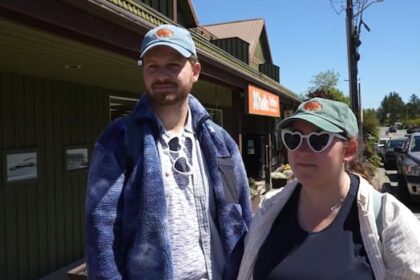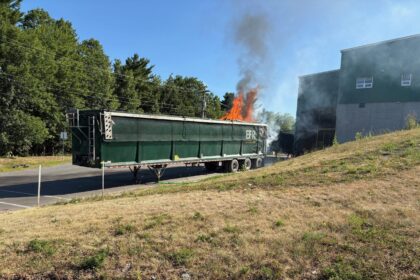Consider this scenario: The premier of a tired government, hoping the party can win another term after a decade in power, has one last budget before facing the voters. He decides to run a big cash deficit, ramp up spending and announce major new projects in health and power generation. I’m talking, of course, about former Yukon Party Premier Darrell Pasloski in 2016. His last budget ramped the spending with a cash deficit up to $75 million. His campaign highlighted spending on the Whistle Bend Continuing Care Facility and set aside planning money for next generation hydro projects. Fast-forward to today. Premier Ranj Pillai’s last pre-election budget has a cash deficit of $88 million, plus planning money for a big expansion of Whitehorse hospital (although the capital budget does not show money to build it) as well as last week’s announcement of plans for two major new diesel generating plants near Whitehorse. Another parallel between the governments is that both planned ahead, ramping up deficit spending the year before the election, too. The Yukon Party cash deficit in the previous year was $91 million, while the current government’s cash deficit is coming in at $113 million for 2024-25. Government spending can be slow, so you need to plan ahead. The Yukon Party actually failed to spend as much as it hoped. By the end of their last fiscal year, by which point they were in opposition, the territorial net financial assets were actually $36 million better than they had planned. The stand-out feature of this year’s territorial budget is debt: a new line item provides for a stonking $400 million in long-term debt. This has been a long time coming. It is a bit unfair to compare the current government to its predecessor by saying the Liberal government has ramped up deficits in the run up to the election. In reality, the government has been running cash deficits steadily for years. At the start of the fiscal year the Liberals took office, the territory’s net financial assets — the official accounting measure you can use as shorthand for the Yukon’s debt position — were $93 million. Nine budgets later, the net financial assets will be -$696 million, which is a swing of $789 million. If you look at the details in the budget, the $400 million in new long-term debt is mostly just a refinancing of previous short-term debt. In the current fiscal year, it shows $400 million in short-term debt. Of this, $250 million will be retired leaving $150 million next year. The new $400 million in long-term debt, in effect, covers the retired short-term debt and adds another $150 million of borrowing capacity. Debt is not necessarily bad. How would you afford your house without a mortgage? This spending bought us lots of popular things, such as sporting facilities, new schools and mental health facilities. Borrowing also lets you absorb shocks, like the more than $100 million already sucked up by the Victoria Gold Corporation debacle. Debt gets bad when you have too much of it or interest payments eat up too much of your annual income. One thing the years of deficit spending do not seem to have delivered is a more economically sustainable Yukon economy. The Yukon Party’s last budget saw the local economy producing enough tax and fee revenue to contribute 14.6 per cent of Yukon government revenue. The figure in this year’s budget is 15 per cent. On the quantity of debt question, one difference between provinces and territories is that the feds don’t trust the territories to borrow however much they want. We have a federal debt limit, recently raised, of $1.2 billion. Even after the election-year spending, we’ll still have more than $400 million in borrowing headroom. On the interest payments, say we pencil in four per cent. That’s the federal 10-year bond yield plus a premium like the provinces pay. That would make the interest cost on $400 million around $16 million per year. A finance official would say that’s not much on a $2-billion budget. The frontline departments might say it would have been nice to spend that money hiring another 150 nurses and teachers. Looking forward, the budget lays out a financial plan to 2030. Finance Minister Sandy Silver did not use the word “debt” in his speech, but said “we have laid out a path to repay borrowed funds.” The plan shows debt peaking in 2025-26 and then declining slowly and steadily by about 10 per cent to 2029-30. The Yukon government has decided not to have an independent legislative budget officer like Ottawa and some provinces to tell citizens how realistic the assumptions behind such forecasts are. However, a few things stand out to me. First, revenue is forecast to grow at five per cent per year. This is faster than expected inflation plus population growth. But it is plausible given the generosity of our transfer payment. Second, expenses grow at only 1.4 per cent per year. This is a quarter of the long-term historical operations and maintenance average for the Yukon government. Expenses grew 4.6 per cent just between this year’s spring budget and the fall supplemental budget. So this assumption requires you to believe the next government, of whatever political stripe, will run a much tighter fiscal ship than we have seen in the Yukon in a long time. Third, the capital budget plan shows declining capital spending over the coming years. The capital plan does not appear to include big bucks to cover the hospital expansion or the new fleet of diesel generators. This assumption requires you to assume that these projects never happen, or that other items in the capital budget get axed to pay for them. With that $400 million in borrowing headroom, I doubt any of the election candidates will risk a lot of talk about long-term fiscal sustainability. But I predict the word “debt” will be said a lot more often in the election after that. Keith Halliday is a Yukon economist and the winner of the Canadian Community Newspaper Award for Outstanding Columnist. The audiobook version of his most recent book Moonshadows, a Yukon-noir thriller, has just been released.
Monday, 22 Dec 2025
Canada – The Illusion
Search
Have an existing account?
Sign In
© 2022 Foxiz News Network. Ruby Design Company. All Rights Reserved.
You May also Like
- More News:
- history
- Standing Bear Network
- John Gonzalez
- ᐊᔭᐦᑊ ayahp — It happened
- Creation
- Beneath the Water
- Olympic gold medal
- Jim Thorpe
- type O blood
- the bringer of life
- Raven
- Wás’agi
- NoiseCat
- 'Sugarcane'
- The rivers still sing
- ᑲᓂᐸᐏᐟ ᒪᐢᑿ
- ᐅᑳᐤ okâw — We remember
- ᐊᓂᓈᐯᐃᐧᐣ aninâpêwin — Truth
- This is what it means to be human.
- Nokoma











